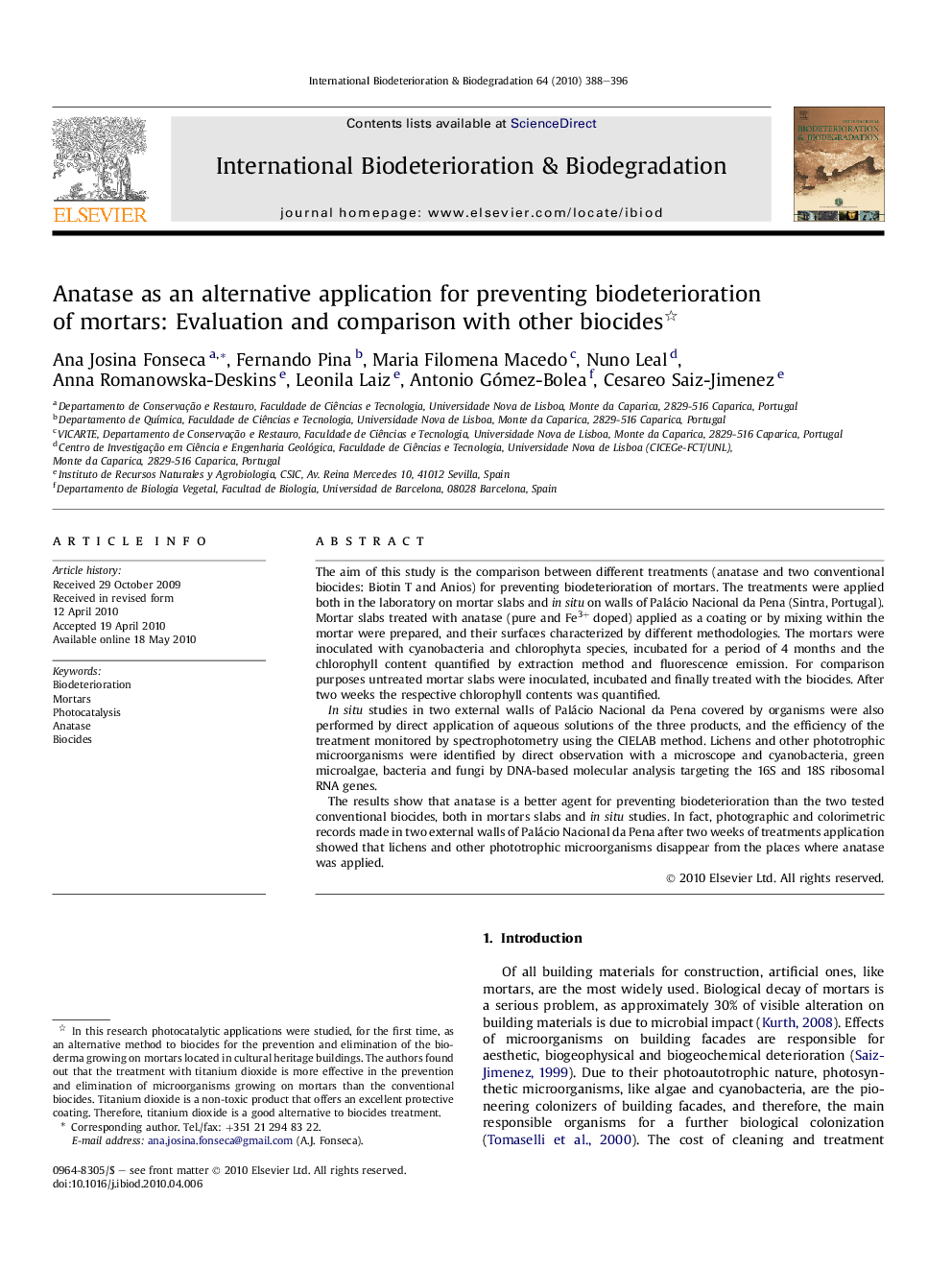| Article ID | Journal | Published Year | Pages | File Type |
|---|---|---|---|---|
| 4365653 | International Biodeterioration & Biodegradation | 2010 | 9 Pages |
The aim of this study is the comparison between different treatments (anatase and two conventional biocides: Biotin T and Anios) for preventing biodeterioration of mortars. The treatments were applied both in the laboratory on mortar slabs and in situ on walls of Palácio Nacional da Pena (Sintra, Portugal). Mortar slabs treated with anatase (pure and Fe3+ doped) applied as a coating or by mixing within the mortar were prepared, and their surfaces characterized by different methodologies. The mortars were inoculated with cyanobacteria and chlorophyta species, incubated for a period of 4 months and the chlorophyll content quantified by extraction method and fluorescence emission. For comparison purposes untreated mortar slabs were inoculated, incubated and finally treated with the biocides. After two weeks the respective chlorophyll contents was quantified.In situ studies in two external walls of Palácio Nacional da Pena covered by organisms were also performed by direct application of aqueous solutions of the three products, and the efficiency of the treatment monitored by spectrophotometry using the CIELAB method. Lichens and other phototrophic microorganisms were identified by direct observation with a microscope and cyanobacteria, green microalgae, bacteria and fungi by DNA-based molecular analysis targeting the 16S and 18S ribosomal RNA genes.The results show that anatase is a better agent for preventing biodeterioration than the two tested conventional biocides, both in mortars slabs and in situ studies. In fact, photographic and colorimetric records made in two external walls of Palácio Nacional da Pena after two weeks of treatments application showed that lichens and other phototrophic microorganisms disappear from the places where anatase was applied.
